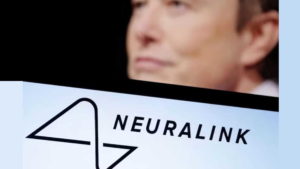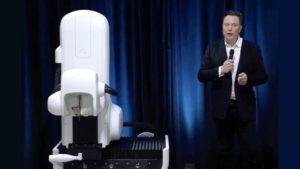An incredible Brain-machine interface entered the world of medical technology advancements when Neuralink, a company by Elon Musk, successfully implanted a device in the human brain.
Elon Musk is known to be the one with revolutionary and innovative approaches. He stated that his company’s first product, called Telepathy, lets consumers operate a computer or phone with just their thoughts.
Isn’t this some sort of movie-like thing? Brain Implant Neuralink is a major accomplishment, especially for those who lost their body parts or are disabled.
The implantation of a customized device within a person’s brain is a benchmark that can lead to amazing medical technologies for the human benefit.
Elon Musk announces,
“Neuralink successfully implanted its first human receiver yesterday; the recipient is recovering well. Early results make evident positive results with positive detection of neuron spikes.”
Nonetheless, the goal of Neuralink is to connect computers to human brains to treat complex neurological disorders. This is an important step taken for brain-machine interface technology and its successful results so far are satisfactory.

The initial recipient of this implant is already making a full recovery. Brain Implant Neuralink shows optimism in creating a direct computer-brain interface through implantable technology as it could be extremely helpful for those who suffer from illnesses like amyotrophic lateral sclerosis (ALS) or spinal cord injuries that block their ability to move their hands.
Moreover, here an important thing to note is this is not something that came out of the box all of a sudden or something that never existed before.
Neuralink Brain-machine interface has previously showcased its talents in a video that showed monkeys using their brains to handle computer cursors. Plus similar devices have already been used by several competing businesses.
However, Neuralink with its brain-machine interface technology is one of a relatively limited group of businesses that have successfully implanted their devices in humans, even though many are working on interesting things.
Undoubtedly, the accomplishments of Elon Musk are one of a kind and they truly solve the problems faced by humanity. However, the need for carefulness is mandatory, and real progress can only be measured in the long run.
The Aim Of Brain-machine Interface Of Neuralink

Neuralink with brain-machine interface technology wants to use brain implants to enhance the quality of life for people suffering from neurological conditions. With the help of these implants, individuals can control things with just their thoughts by translating cerebral activity. For people with physical restrictions, the technology can completely change control and communication.
Elon Musk even stated at a Neuralink presentation in late 2022 that he believed these gadgets might one day give blind people sight again or let those who had their spinal cords cut to regain full use of their bodies.
However, some professionals who thought such Brain-machine interfaces or scientific breakthroughs were still to come were doubtful of these brave statements.
Nevertheless, All told, Brain Implant Neuralink in a person is a sign worth mentioning advancement in the dream list of Elon Musk regarding fusing the Brain-machine interface and the human brain to improve lives especially those of people with physical limitations.
The full potential and significance of this revolutionary technology will become evident through ongoing clinical trials and subsequent advancements.

Furthermore, Neuralink was given FDA approval in May 2023 to carry out human testing of Brain Implant Neuralink regardless of the criticism. With this approval, a six-year study was launched in which a robot is utilized to surgically implant 64 flexible threads, each thinner than a human hair, into the brain region responsible for movement intention.
According to the business, these threads enable experimental Brain Implant Neuralink, which is powered by a wirelessly rechargeable battery, to record and transmit brain impulses to an app that decodes the intended movement of users.
This brain-machine interface technology has great potential to help people with neurological disorders in the future and is an excellent example of how fundamental neuroscience research is being harnessed for medical advances.
The field is exceptional with the potential of unlocking treasure for humans. With time and with advancements, it can revolutionize the lives the people in unbelievable ways.
For now, it is a great achievement and most Brain-machine interfaces are still in experimental stages thus it will likely be many years before they are commonly available.













